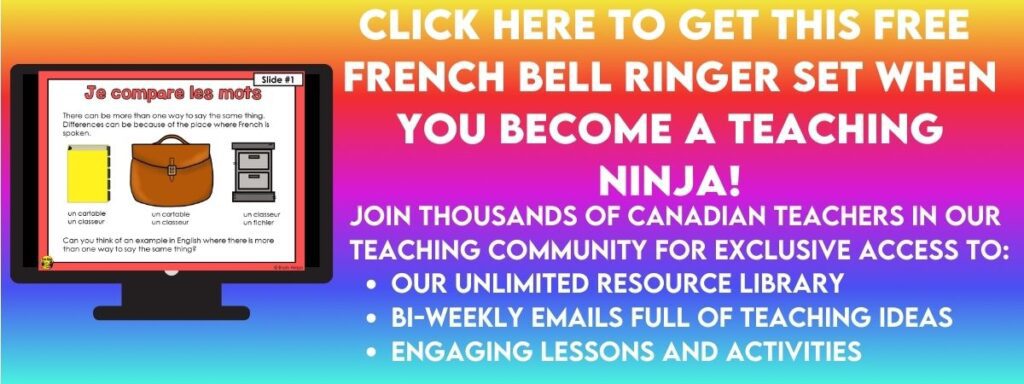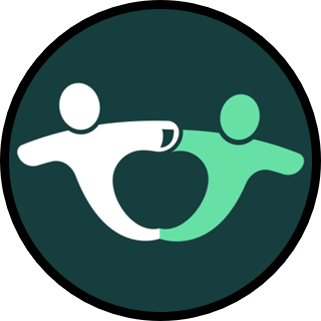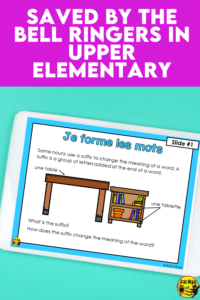
Your class trickles in as you watch the time tick away and the punctual crowd starts to get restless. A student hands in work, another tells you all about the taco salad they had for lunch, while two others argue over which of two seemingly identical chairs is theirs. Does this sound familiar to you? It sounds like bell ringers might be the solution!
Bell Ringers Can Take Back That Wasted Time
Silent reading is a great way to start the day or for use during transitions. But maybe you want to shake things up? Or you want to make every minute of the day count. Bell ringers help to get things rolling from bell to bell. Read on to find out how we use them in our classroom and all the different types of bell ringers that can work.
What is a Bell Ringer?
Bell ringers are quick and easy activities (or small assignments) that students can complete independently. This happens while they wait for class to start. It can be the first thing they do in the morning, right before or after a break such as recess or lunch, or between classes/subjects. They could even be used at the end of the day.
Bell ringers get kids’ brains primed for learning. They get students thinking about learning or about the topic of the bell ringer. They give students a routine task that is predictable and not stressful (and hopefully, they are fun, too).
Bell ringers are not meant to be assessed. Although they can be used as formative assessments, they shouldn’t be used as summative or cumulative assessments. No grades should be given for the work done during bell ringers. Looking at student work to get a sense of where they’re at can be helpful for lesson planning.
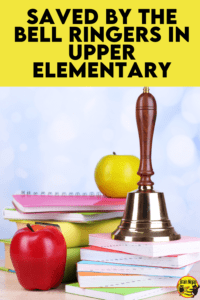
How to Run a Bell Ringer
Routines
Just like flossing your teeth, once you get into the habit, this becomes second nature. Routines create independence. It’s a predictable, safe way to get students ready for the day or the lesson. At the end of the day, routines are a nice way to sum up student learning, challenge them to continue learning, or inspire conversations at home.
Simplicity
You want students to be able to do the work independently. It defeats the purpose if students need lots of support to complete bell ringers. If you have students who struggle with reading, writing or working independently (for whatever reason), establish a buddy system for those students. Working with a partner can support those struggling students or English Language Learners.
Purpose
Although you can have fun with this, in general, there should be a purpose to the bell ringers. Students will buy in more if they know there is a purpose. They like to know the reason why they are doing things. Generally, our purpose is to let students know which subject we’ll be starting with or the topic that we might be addressing. Sometimes, we use them to review what we’ve learned the day before.
Skip the Assessment
Don’t assess or grade the bell ringers. This is not their purpose. The activity needs to be low risk. This keeps students engaged and willing to take risks in the activities. Who has time for grading all of that anyway? A quick glance over what students do or say should suffice.
Mix It Up
The diversity of bell ringers keeps students engaged. You want them chomping at the bit to find out what the bell ringer is for the day. Hook them right from the start!
Location Matters!
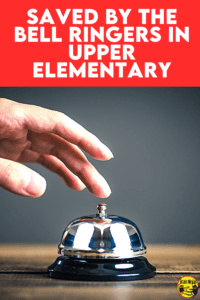
There are a few ways to display the bell ringers. You can have a spot on a board where you post them, but ideally, projecting the bell ringer from your computer is the best. As long as students know where to look every single time, you will have to figure out what works best in your classroom. It will depend on the type of bell ringer and the subject area.
Think about where students will collect their answers (if at all). A scribbler, binder or folder are some ways to collect their work. You could also go digital, but that means students would have to have access to a device. This might not be worth it as it might take up more time getting them set up than completing the actual bell ringer. Unless you are teaching online. This is all part of setting up the routine you use.
Use the first few bell ringers to practice the routines instead of the content in the bell ringer.
Types of Bell Ringers
Previewing
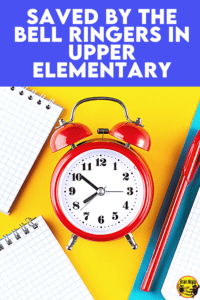
When starting a new unit or introducing a new concept, you want to get your students thinking about what’s to come. Bell ringers can prime students’ brains for new learning, like priming your lawnmower before yanking on the chain. If you don’t do it, it won’t start. But if you prime it too much, the engine drowns and won’t start. Make sure you use something that is manageable for students. You don’t want them to be drowning in the learning before you even start the lesson. It’s meant to spark interest – not teach the lesson.
Reviewing
If you run out of time during a lesson, bell ringers are a great way to finish up a concept on another day. Use a bell ringer to reignite the content from the previous learning and get kids right back into the game.
When you are introducing the next level of the concept, bell ringers are fantastic for reviewing what was previously learned before introducing more information.
If you are introducing a new concept that builds on a concept you taught earlier in the year (or maybe it is an outcome from a previous year), a bell ringer is a quick way to review. It is also great to see what students already know about a concept to help with your planning.
Extending
If your students have completed the concept or lesson and are ready to stretch their thinking, bell ringers can provide opportunities for them to stretch their thinking. Just like your favourite pyjamas that get more comfortable as you wear them, challenging student thinking regularly makes students more comfortable with the challenge.
Do your students struggle with maintaining a Growth Mindset? You’ll want to lead them out of the learning pit! Not sure what this is? Check out our post on how to Use The Learning Pit to Teach Growth Mindset. This is especially true in low-stakes situations like bell ringers where they are not being assessed. Remember that the goal of a bell ringer is to ignite learning for the day or lesson.
Practicing
Bell ringers provide a great opportunity for students to practice skills. This is especially true for skills that need short, repeated practice but not tonnes of class time dedicated to the task. Grammar tidbits and math facts are examples of short, repeated practice opportunities.
Playing
It’s okay to let loose sometimes, too. Not everything has to be connected to the curriculum. Bell ringers can be just for fun. Fun facts, random quotes, funny stories, or historical facts are possibilities for random bell ringer fun. Even memes can be used for fun. Put up a picture and ask your students to write the meme that goes with it. (This one is super fun if you have lots of class clowns and comic geniuses).
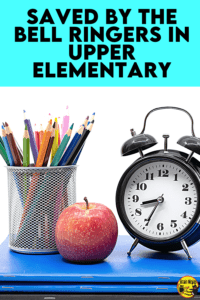
Subject Specific Bell Ringers
Start off your class with a subject-specific bell ringer as you get ready for the lesson. Here are some ideas you can use for bell ringers.
Language Arts
Writing Activities
In our classroom, students write uninterrupted for 10-15 minutes. For more information on other ways we use the writing prompts, read Challenge Your Students with Writing Activities Every Day. We have created so many writing prompts over the years. We have sets that are organized in different ways. The monthly and genre sets contain the same prompts organized differently. They do not contain holidays. The holiday and season sets are completely new prompts.
Monthly Sets: Free Sample, September, October, November, December, January, February, March, April, May, June, Bundle
Genre: Free Sample, Narrative, Expository, Persuasive, Bundle
Holiday Sets: Back to School, Thanksgiving, Halloween, Remembrance Day, Christmas, New Year’s, Lunar New Year, Poetry Month, Diwali, Kindness, Earth Day, Easter, Valentine’s Day, St. Patrick’s Day, End of the Year
Seasons: Spring, Summer, Autumn, Winter, Bundle
Complete a journaling activity.
Write a book, movie, video game, website, or television show recommendation.
Fill in blank speech bubbles.
Language Arts and Grammar Activities
- Draw comic book strips to retell stories or make up new ones.
- Prepare for Speech on the Spot, a public speaking practice activity.
- Complete word work (spelling, word families, word parts).
- Explore figurative language.
- Refine recognizing parts of speech.
- Practice grammar skills.
- Learn about literary terms.
- Introduce new vocabulary words.
- Fix mistakes (editing and revising).
- Analyze mentor sentences.
Reading Activities
Practice reading comprehension strategies
Create responses to a text
Complete Weekly Reading Skills
We created these activities based on Canadian content for students to complete during our Language Arts lessons. You can read more about them in this post, Add Great Content to Your Literacy Lessons. Many of the activities make great bell ringers. The grade levels mainly align with the reading levels, but please check the previews. Since there is lots of content-specific language, some of the passages might be difficult for students reading below grade level to complete independently.
Grade Four Sets
Set 1: Natural Resources on TpT ($USD) or our BN Shop ($CAN)
Orphan Wells (Oil Energy) on TpT ($USD) or our BN Shop ($CAN)
Urban Agriculture on TpT ($USD) or our BN Shop ($CAN)
Mountain Pine Beetle (Forestry) on TpT ($USD) or our BN Shop ($CAN)
Watersheds (Clean Water) on TpT ($USD) or our BN Shop ($CAN)
Set 2: Wandering Waste on TpT ($USD) or our BN Shop ($CAN)
Whale Poop on TpT ($USD) or our BN Shop ($CAN)
Plastic Film on TpT ($USD) or our BN Shop ($CAN)
Pacific Garbage Patch on TpT ($USD) or our BN Shop ($CAN)
Waste Innovation on TpT ($USD) or our BN Shop ($CAN)
Set 3: Community Life on TpT ($USD) or our BN Shop ($CAN)
Quality of Life on TpT ($USD) or our BN Shop ($CAN)
Urban Origins on TpT ($USD) or our BN Shop ($CAN)
Rural Ghost Towns on TpT ($USD) or our BN Shop ($CAN)
Tourism on TpT ($USD) or our BN Shop ($CAN)
Set 4: Light and Shadow on TpT ($USD) or our BN Shop ($CAN)
Colour Blindness on TpT ($USD) or our BN Shop ($CAN)
Shadow Puppets on TpT ($USD) or our BN Shop ($CAN)
Rainbows on TpT ($USD) or our BN Shop ($CAN)
Ultraviolet Light on TpT ($USD) or our BN Shop ($CAN)
Set 5: Heritage Objects on TpT ($USD) or our BN Shop ($CAN)
Frank Slide on TpT ($USD) or our BN Shop ($CAN)
Artifacts on TpT ($USD) or our BN Shop ($CAN)
Fossils on TpT ($USD) or our BN Shop ($CAN)
Okotoks on TpT ($USD) or our BN Shop ($CAN)
Set 6: Simple Machines on TpT ($USD) or our BN Shop ($CAN)
Indigenous Tools on TpT ($USD) or our BN Shop ($CAN)
Nature’s Machines on TpT ($USD) or our BN Shop ($CAN)
Silly Machines on TpT ($USD) or our BN Shop ($CAN)
Mechanical Watches on TpT ($USD) or our BN Shop ($CAN)
Set 7: Heritage Sites on TpT ($USD) or our BN Shop ($CAN)
Father Lacombe Chapel on TpT ($USD) or our BN Shop ($CAN)
Buffalo Jumps (Head-Smashed-In Buffalo Jump) on TpT ($USD) or our BN Shop ($CAN)
John Ware’s Cabin on TpT ($USD) or our BN Shop ($CAN)
Ukrainian Heritage Village on TpT ($USD) or our BN Shop ($CAN)
Writing-On-Stone Provincial Park (this is a free lesson to try) on TpT ($USD) or our BN Shop ($CAN)
Set 8: Peculiar Plants on TpT ($USD) or our BN Shop ($CAN)
Sacred Plants on TpT ($USD) or our BN Shop ($CAN)
Carnivorous Plants on TpT ($USD) or our BN Shop ($CAN)
Invasive Plants on TpT ($USD) or our BN Shop ($CAN)
Xeriscaping on TpT ($USD) or our BN Shop ($CAN)
Grade Five Sets
Set 1 Becoming Canada on TpT ($USD) or our BN Shop ($CAN)
Patriation on TpT ($USD) or our BN Shop ($CAN)
Canadian Flag on TpT ($USD) or our BN Shop ($CAN)
Statute of Westminster on TpT ($USD) or our BN Shop ($CAN)
Charter of Rights on TpT ($USD) or our BN Shop ($CAN)
Set 2 Weather Wonders on TpT ($USD) or our BN Shop ($CAN)
Weather Forecasting on TpT ($USD) or our BN Shop ($CAN)
Tornados on TpT ($USD) or our BN Shop ($CAN)
Permafrost (You can try this one for free) on TpT ($USD) or our BN Shop ($CAN)
Fabrics & Fibres on TpT ($USD) or our BN Shop ($CAN)
Climate Migration on TpT ($USD) or our BN Shop ($CAN)
Set 3 Confederation on TpT ($USD) or our BN Shop ($CAN)
Macdonald & Cartier on TpT ($USD) or our BN Shop ($CAN)
Expanding West on TpT ($USD) or our BN Shop ($CAN)
Excluded Voices (Indigenous People) on TpT ($USD) or our BN Shop ($CAN)
Nunavut on TpT ($USD) or our BN Shop ($CAN)
Set 4 Canadian Chemistry on TpT ($USD) or our BN Shop ($CAN)
Peanut Butter on TpT ($USD) or our BN Shop ($CAN)
Green Ink on TpT ($USD) or our BN Shop ($CAN)
Fireworks on TpT ($USD) or our BN Shop ($CAN)
Insulin on TpT ($USD) or our BN Shop ($CAN)
Set 5 Canadian Injustices on TpT ($USD) or our BN Shop ($CAN)
Africville on TpT ($USD) or our BN Shop ($CAN)
Chinese Head Tax on TpT ($USD) or our BN Shop ($CAN)
Internment Camps on TpT ($USD) or our BN Shop ($CAN)
Komagata Maru on TpT ($USD) or our BN Shop ($CAN)
Set 6 Eclectic Electricity on TpT ($USD) or our BN Shop ($CAN)
Electric Eels on TpT ($USD) or our BN Shop ($CAN)
Internet Data Centres on TpT ($USD) or our BN Shop ($CAN)
Lightning on TpT ($USD) or our BN Shop ($CAN)
Electric Cars on TpT ($USD) or our BN Shop ($CAN)
Set 7 Canadian Groundbreakers on TpT ($USD) or our BN Shop ($CAN)
Willie O’Ree on TpT ($USD) or our BN Shop ($CAN)
Elsie MacGill on TpT ($USD) or our BN Shop ($CAN)
Stanley G. Grizzle on TpT ($USD) or our BN Shop ($CAN)
Mary Two-Axe Earley on TpT ($USD) or our BN Shop ($CAN)
Set 8 Wild Wetlands on TpT ($USD) or our BN Shop ($CAN)
Busy Beavers on TpT ($USD) or our BN Shop ($CAN)
Making Wetlands on TpT ($USD) or our BN Shop ($CAN)
Uses of Peat on TpT ($USD) or our BN Shop ($CAN)
Urbanization on TpT ($USD) or our BN Shop ($CAN)
Grade Six Sets
Set 1 Canadian Space Tales on TpT ($USD) or our BN Shop ($CAN)
Canadian Astronauts on TpT ($USD) or our BN Shop ($CAN)
Canadian Space Technology on TpT ($USD) or our BN Shop ($CAN)
Constellations (You can try this one for free) on TpT ($USD) or our BN Shop ($CAN)
Pluto on TpT ($USD) or our BN Shop ($CAN)
Space Junk on TpT ($USD) or our BN Shop ($CAN)
French as a Second Language
- Build vocabulary
- Complete word studies
- Practice recognizing parts of speech and using them correctly
- Practice grammar skills
- Use writing prompts
- Analyze mentor sentences
- Practice dialogues
- Fill in speech bubbles
- Draw comic book strips
- Learn and practice linguistic concepts
We created an entire set of French Bell Ringers designed for French as a Second Language classrooms. They share information about the French language with short activities each day. They are organized by month, but they are not generally seasonal and can be done in any order.
September, October, November, December, January, February, March, April, May, June
Try this free set or grab the whole year bundle that comes with a bonus set.
You can try a free set of the French Bell Ringers when you join our mailing list. If you’re already a member, you can find the set in the resource library.
Math
- Work on a problem of the day or week (problem solving)
- Practice operations drills like addition, subtraction, multiplication, division
- Complete task cards
- Complete a number of the day activity
- Use manipulatives to solve a problem
Science
- Introduce science phenomena/concepts
- Read science news
- Interpret data
- Make hypotheses or predictions
- Make observations
- Watch and debrief video of science demonstration
- Complete science journal prompts
Social Studies
- Work on a Geography Scavenger Hunt
- Complete mapping activities
- Interpret historical images
- Interpret primary sources
- Explore different points of view on a topic
- Read quotes and respond
- Read current events
- Prepare for discussions
Other
- Complete logic puzzles
- Interpret image prompts
- Complete simple art projects like sketching
- Respond to a piece of artwork
- Practice fine motor skills (printing, cursive writing, drawing, cutting, tracing, sewing)
- Play online games
- Watch wordless videos and complete an activity
- Complete a “Would you rather…” activity
- Complete “What if…” activity
- Write a Tweet
- Answer a question of the day
- Create a meme
- Answer polls or surveys
- Complete riddles and brain teasers
- Answer online quizzes
Why You Should Use Bell Ringers
The biggest win in our eyes is avoiding the start of class chaos that we all experience. Kids have something to do right away and are engaged in learning from the minute they arrive. Remember the anticipatory set or the hook in your lesson plans? Bell ringers can do this work for you.
Kids love routines (adults do, too). The predictability of the routine helps students get ready for learning. Just like warming up your muscles before a competition, bell ringers warm up students’ brains. Bell ringers can help students make connections to old learning, new learning, between concepts and between ideas.
Have you ever used a bell ringer to start off your class? Tell us about it in the comments below.

